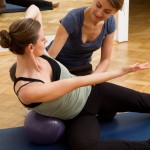June 21 2017
Are you Motivated – by Anna Schrefl
Motivation – everything changes with or without it.
How easy a class can flow when we are training fully motivated; how fun it can be when our clients are enthusiastic about their workout. On the other hand, life can get very heavy when we drag ourselves through a class, when we must push clients who don´t really feel like working out. After two months of training, they still don´t look like Madonna or Matt Damon. And if they lose their motivation, we lose our clients.
Therefore, motivation has become a big and popular marketing thing. Not surprisingly, there is a lot of material on motivation out there – workshops, webinars and tools – all about making people catch fire and then catching those people. In marketing speak, after the acquisition phase, next comes retention: the phase in which you make clients keep visiting your studio.
I am not a marketing expert. However, in this article, I want to take a closer look at motivation from a sports psychology perspective.
Types of motivation
In science, researchers talk about intrinsic and extrinsic motivation, depending on the degree to which a behaviour has been internalized into an individual sense of self. The intrinsically motivated exerciser is doing an activity “for its own sake”: to experience a pleasant physical sensation, to engage in a challenge or to learn a new thing without aiming for a special result. The extrinsically motivated exerciser might seek desirable consequences or avoid negative ones, such as receiving positive or negative reactions of the trainer, or they might want to socialize with other people or achieve good physical conditioning. Furthermore, extrinsic motivation can also be imposed by oneself to avoid a feeling of guilt if the training or task was not accomplished. A third dimension of the motivation scale is “amotivation” – an absence of motivation usually characterized by a lack of perceived competence and/or a failure to value the activity or its outcomes. The “amotivated” client is often the most frustrating (and the most energy-sapping) for many teachers.
Intrinsic versus extrinsic motivation
Many studies have shown that athletes who stopped their careers were significantly less intrinsically motivated. The same holds true for people who dropped out of their exercise program. Enjoyment and fun are the most persuasive goals. We as trainers know that very well. Intrinsic motivation is part of our active nature. Very often, our actions are explained by extrinsic achievements and goals but this does not give credit to the fact that the “causes” of many human activities are spontaneous: they arise from within ourselves, they are playful and they show most surprising manifestations. With chimpanzees, for example, active play represents an essential need. Movement for the sake of movement is an unquenchable desire, not only for these primates, but for us as well.
The golden intrinsic motivation
Does this sound familiar to you? Isn´t it inspiring when your clients just love to move, simply enjoying the great sensation during and after a good Pilates workout? How can we, teachers and coaches, guide all our clients to find this “golden” intrinsic motivation?
First, there is no black and white. People might have multiple motivations and the most important thing is to what degree they internalize their motivation – even if it is just “losing weight!” In this case, internalizing means making “losing weight” yourself: enjoying a new bodily sensation, and not being controlled by an idealised (and unrealistic) body image. Here we get to a very important point of scientific research, the perception of three global psychological needs: “autonomy”, “competence” and “relatedness”. These three factors will affect how we can internalize motivation to a great deal. In other words, this implies that controlling our own motivations, feeling good in what we are doing and “being seen” by our teachers and trainers are all essential to create and keep a “golden” motivation.
What to do
Trainers and teachers should be encouraged to enhance intrinsic motivation. At least in the beginning, however, emphasizing fun and enjoyment, might not work for all our clients, especially for those who came for different reasons. Investigating our clients’ reasons for participating, and setting realistic and achievable goals are first steps. A positive climate and movement experience are the next steps. Luckily, we Pilates trainers are already experts in creating a pleasant movement experience by providing safe and challenging exercises, variety in our training programs and novel training tools. We also should ask for our clients’ feedback and comments.
Providing encouragement, acknowledging achievements of exercises and giving a feeling of caring about their personal progress, are all equally important. For some clients, that might mean being honest and strict to them as well as explaining them how much effort they need to invest to bring about the desired changes. Over time, our clients can learn to internalize motivation and look good because they feel good.
Anna Schrefl
Anna Schrefl studied contemporary dance at the Amsterdam School of Arts and the Modern Dance Academy in Rotterdam. In 2001 she finalized her Pilates training in New York with Romana Kryzanowska. She completed her Pilates Teacher Trainer training under Ton Voogt and Michael Fritzke and established the “Pilates System Europe – Certification Program” in 2006 under the supervision of Ton and Michael. Anna teaches special seminars for Pilates trainers around Europe and also works as a freelance choreographer. Since 2013, she is a certified advanced specialist in Spiraldynamik® and is currently becoming a lecturer of the Spiraldynamik® methodology. Since 2015, she has taken part in the Master of Dance Science Programme of the University of Bern. Anna is the director of Pilates System Europe® in Vienna.

